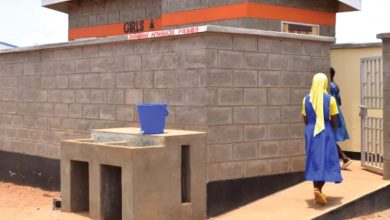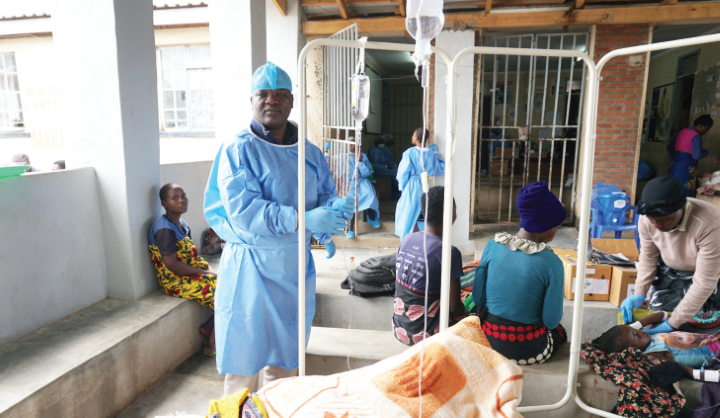Saving lives with the Blantyre Coma Scale
Agness Hale, mother to three-year-old Mable, first noticed the unusual quietness in her daughter on the morning of 29 April this year. She remembers vividly the events that unfolded.
Towards midday, Mable started complaining of stomach pains. At first, Hale did not read much into it; she thought perhaps it was what her daughter had eaten. But when Mable stopped responding to anything, Hale, from group village head Kachere in Blantyre, decided to rush the child to a nearby clinic.
“She was not her usual self. Within hours, she had stopped talking and had become so frail. I became scared and rushed her to the hospital,” she says.
Upon arrival at the clinic, Mable lost consciousness and was immediately taken to Queen Elizabeth Central Hospital (QECH), where she was diagnosed with severe malaria.
“At Queens, we were taken straight to the emergency ward where the doctor carried out some tests. The doctor clenched a fist on her chest, he talked to her and there was no response. She was then taken to the wards where she was admitted. Later, a feeding tube was inserted in her mouth,” says Hale.
Mable remained unconscious for over a week. When she was released from hospital after two weeks, she had lost her hearing and had temporary disability in her left leg and right arm which have since improved. She is required to see the doctors frequently to monitor her progress.
By clenching his fist on Mable’s chest, the doctor was trying to measure her level of consciousness using what is known as the Blantyre Coma Scale. The scale was designed by doctors Terrie Taylor and Professor Malcolm Molyneux in 1987.
Molyneux says they came up with the scale to detect the depth of unconsciousness in children, since children who are unconscious look the same. He says there is a similar scale for adults, the Glasgow Scale, that has been in use for many years but it is not ideal for children.
“The Glasgow Scale depends on a person’s understanding of speech and ability to respond to speech. But you cannot expect a child, such as a two year-old, to respond effectively to speech. That is why we thought it was necessary to design something specifically for children,” says Molyneux.
He says another advantage of the Blantyre Coma Scale is that it is reliable and allows children to be assessed and treated quickly, and it can be used repeatedly.
It was named after the City of Blantyre because the research that led to its discovery was done at the Blantyre Malaria Project paediatric research ward at QECH. The method was widely adopted elsewhere, and today the Blantyre Coma Scale is used worldwide for the assessment of severely ill children, especially in developing countries.
Malawi-Liverpool-Wellcome Trust (MLW) paediatric neurologist Mac Mallewa says the scale is used in patients, especially children, that are unconscious as a result of malaria, meningitis or any other disease.
The score assigned by the Blantyre Coma Scale is a number from 0 to 5. It is determined by adding the results from three groups: motor response, verbal response, and eye opening.
According to Mallewa, the scale’s minimum score is 0, which indicates poor results while the maximum is 5 indicating good results. All scores under 5 are considered abnormal.
“The score is mostly useful for children up to 10 years of age. First, you try and talk to the child to see if they respond, if there is no response you observe movement of the child by applying a painful stimulus usually done by applying pressure to the chest and then you also observe if the child is able to open their eyes.
“Eye movement attracts a maximum score of one, motor and verbal responses both attract a maximum score of two. Anything below five is abnormal but if it goes as low as zero it means the child is deeply unconscious and that he/she needs immediate assistance to determine what could be wrong,” he says.
Mallewa says the discovery of the Blantyre Coma Scale has transformed the health sector worldwide because it allows proper management of severe cases which, if not properly handled, could lead to brain damage in children which may lead to epilepsy, physical disability and disturbing behaviour or, in the worst case, death.
“Children with low coma scale are asked to come back for follow up regularly to be monitored by doctors since they are likely to have suffered brain damage and may require further assistance.
“Without monitoring, some children tend to be restless, others become disabled. So, the score has really been quite beneficial. Doctors, nurses and clinical officers have been trained to use the score,” says Mallewa.
The research findings of the Blantyre Coma Score have been published in various international journals.





